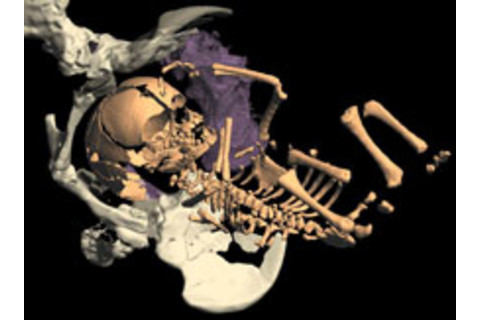
A new analysis of the skulls of three Neanderthal babies shows that the cranium of a newborn Neanderthal was about the same size as that of a newborn Homo sapiens, and that the Neanderthal children grew faster than modern humans in the first few years of life. The report on the young skeletons, which date from between 45,000 to 50,000 years ago, adds fuel to the debate over how similar Neanderthal culture was to that of our early Homo sapiens ancestors. A big-headed infant skeleton found in Russia suggests that childbirth was no easy task for for Neanderthal women.
Neanderthal mothers had slightly larger birth canals, but the prominent face of Neanderthal babies made it just as hard to push out as a modern human. This suggests that both groups had the social structures needed to help with childbirth [New Scientist].
In the study, published in the Proceedings of the National Academy of Science [subscription required], researchers analyzed the infant specimen and two toddler skeletons from Syria,
and made 3-D computer reconstructions of the whole skeletons based on the available fragments — about 70 to 80 percent of the complete skeletons. They also studied the skeletons' teeth to estimate their ages by their dental development [LiveScience].
The researchers' analysis of the Neanderthal toddlers' growth rate lead them to hypothesize that Neanderthal babies grew more quickly in their early years than Homo sapiens, which could have placed a burden on their mothers.
"Neanderthals must have had a rich diet in protein and fat for children to fuel rapid growth in [their] brains," said [anthropologist] Holly Smith. Mothers also likely had to consume vast quantities of calories to produce enough breast milk. This energy-intensive child rearing may have caused "somewhat longer interbirth intervals, or somewhat older mothers," study co-author [Christoph] Zollikofer said [National Geographic News].
But while Zollikofer suggests that this disadvantage may account for the Neanderthals' eventual disappearance from the world, other researchers say that he is drawing hasty conclusions. Image: M. Ponce de León and C. Zollikofer, University of Zurich













